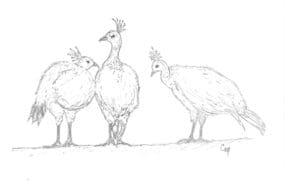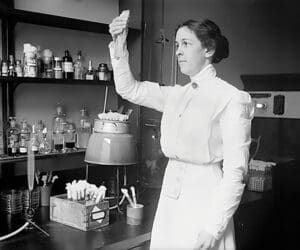By Chris McClure Contributing Editor
Do you ever have one of those situations where you just can’t quite figure out what is really going on? You know something isn’t right, but no matter how you dig into it, your finger never quite lands in the right place. Then, you have an epiphany – an “Ah ha!” moment. It may be something that was said, or maybe it finally just bubbled up out of the murky depths of that cauldron of thought roiling in the background, but there is a sudden flash of insight that says, “Yep, that’s exactly what it is!”
I’m not necessarily saying that’s what happened to me, but maybe. I decided that most organizations are schizophrenic. They have a split personality. There is a group of around 15 percent of the members that accounts for 85 percent of the volume and a group of around 85 percent that accounts for 15 percent. The two groups are diametrically opposed in their view of the world. They think they are playing the same game but on totally different ball fields. They are keeping score against each other, but they aren’t really in the same game.
I think that’s the issue in the cattle industry that is most challenging to all of us. Those who handle the bulk of the cattle see things differently than the bulk of those who individually have few numbers but collectively account for a significant amount of the “noise.”
I don’t mean to belittle either side of that situation. We each need to focus on the things that work best for us – for our own operations. It often means that, even with compromise, we rarely reach a consensus.
Could it be that we waste entirely too much time trying to please everyone when the simplest answer is to please everyone – but with two different models? This applies to cattle breed associations that must deal with commercially focused members on the one side and “lifestyle” breeders on the other. Is it perhaps the same situation within state and national cattlemen’s organizations? Those larger organizations may have more than two opposing sides to every issue they face. There are feeders, large cow-calf and then small cow-calf operations. They each may have very different views on things such as imports or tariffs. It doesn’t mean that any of them are wrong – but each view might be right for some and wrong for others.
How do you navigate those competing interests to create a cohesive approach that will solve some of the problems the industry faces? Rarely do we all agree. When we don’t, how do we approach a solution?
Years ago, I read a book titled The Death of Competition. Its basic premise was that if we each focus on what we do best, we can collaborate to solve challenges even though, on the surface, we may appear to be competitors. For example, consider two businesses in the same industry seeking to capture business from the same potential customers. Both offer the same products and services, but one excels at service while the other has greater capacity for supplying the products needed by the end users. Collaboratively, they could each capitalize on their strengths where the service-oriented company focuses on service while utilizing the product-rich company’s channels for handling products. It might appear that the consumer would be the loser; however, the efficiencies gained could more than offset the negatives, and every participant might gain.
Are there ways to do something similar in the cattle industry? If you are a small producer who feels at a disadvantage in the market, are there ways to leverage your business by cooperating with some of the larger producers in your area?
The recent Cattle Industry Convention reminded me of this situation where the large and small operations often find themselves in opposition to each other over policy positions. Maybe, instead of looking for reasons to oppose, we should instead focus on how to leverage each other’s strengths so that all might win?
As usual, I have lots of questions but not really any concrete answers. I leave that to the smart folks who have experienced success in their businesses and hope that they are willing to share the knowledge they have gained with those seeking similar success.
We don’t need to compete with each other; we need to compete against those “other” meats out there – and do it in such a way that the consumer is happy to share their hard-earned dollars for our products.





